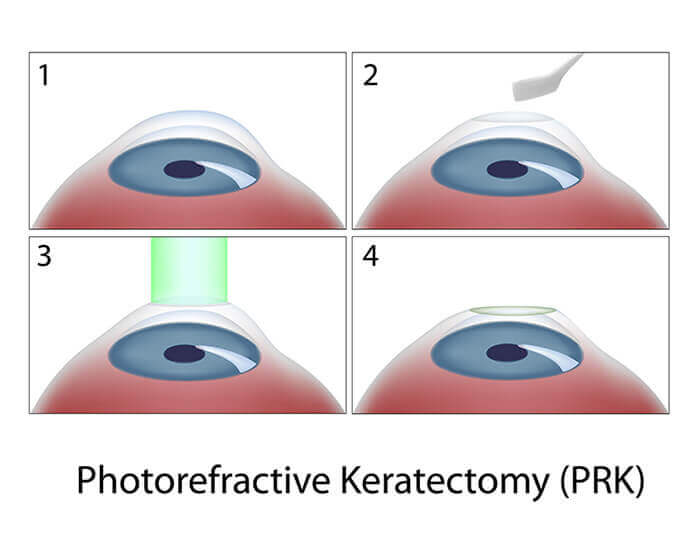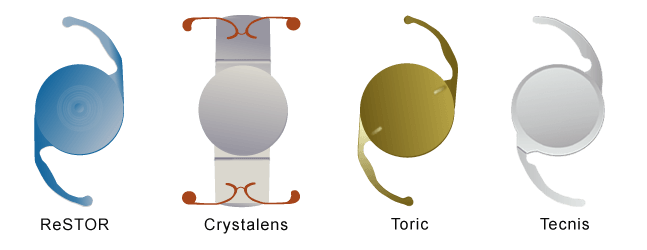Advanced Surface Ablation and PRK
ASA (Advanced Surface Ablation) – a new breakthrough in laser vision correction
Surface ablation treatments such as ASA and PRK can be considered in patients whose cornea thickness prevents them from having LASIK. ASA is similar to PRK. Similarly, the surgeon removes some superficial corneal cells prior to treatment. In ASA, a wave scan has been taken for your eyes prior to the procedure. This report contains information about all the minute imperfections of your eye. The laser is able to treat these imperfections by providing a wavefront-guided treatment.
After the treatment, a contact lens is placed over the eye. This allows the top layers of the cells to regenerate. After a few days, the contact lens is removed. As the cornea continues to heal over the next few weeks, the patient’s vision experience gets better and better. Vision can stabilize in many cases in about 4 to 6 weeks.
PRK (Photorefractive Keratotomy) – a proven alternative to LASIK
Some patients may not be ideal candidates to have LASIK vision correction. In such cases, PRK (Photorefractive Keratotomy) is an alternative form of laser vision correction that can be considered. Instead of creating a corneal flap, the topmost layer of the corneal cells are gently removed. A precision laser is applied to the cornea to correct its shape. After a few days of wearing a protective contact lens, new cells will have regenerated on the corneal surface allowing the patient to see better than before.

During the initial days, patients experience fluctuations of vision. But as days go by, the vision gets clearer. After several weeks, patients have their sharpest vision ever.
Refractive Lens Exchange
As the year’s pass, the natural crystalline lens of our eye loses its ability to focus light from different distances. This results in many individuals having to wear bifocals in order to see clearly. The Refractive Lens Exchange is a surgical procedure that replaces the source of the problem, the aging lens, with an artificial advanced-technology intraocular lens. In some ways, the procedure is similar to cataract surgery which has evolved greatly over the last twenty years to a 15 minute, suture-less, laser and ultrasonic procedure. In cataract surgery, the natural crystalline lens is removed and replaced because it has become cloudy with age. In Refractive Lens Exchange, the natural crystalline lens of the eye is not cloudy but is removed and replaced with an artificial advanced technology intraocular lens in order to reduce dependence on spectacles. Unlike laser vision correction and LASIK which addresses the power of the cornea, this form of surgical vision correction addresses the source of the blurry vision, the aging crystalline lens.

Who can have this surgery?
Patients above 18 years of age are eligible for this surgery. It is for people who want to reduce their dependence on visual aids such as glasses or contact lens. Patients should not have health issues that are affecting their eyes.
Rates of success and potential risks
Lens exchange is a safe surgical procedure. In healthy eyes, patients can expect a large reduction of their dependence on glasses and contact lenses. It is important that is procedure be performed by a qualified and experienced surgeon in order to minimize the risks of complications such as infection, hemorrhage, induced astigmatism, glaucoma, retinal detachment, and inflammation.
Correction ranges
Refractive lens exchange can correct nearsightedness and farsightedness up to 20 diopters and 8 diopters respectively. There are several types of lens used in this procedure. The lens is chosen based on the patient’s lifestyle needs. Some of the options available are single-focus, multifocal, accommodative, and astigmatism-correcting lenses.
On the day of the surgery
This surgery can be performed as an outpatient procedure. A single eye is operated upon at one time. After applying anesthesia to the site of operation, the natural lens of the eye is removed gently through a tiny incision. A new intraocular lens is folded inside this incision and unfolded to surround the site of the original natural lens. The incision requires no stitches and seals on its own.
Expectations
The goal of this surgery is to only reduce the dependence on visual aids. Complications with this surgery are extremely rare. However, it is advisable to seek consultation from a qualified and reputed eye surgeon to be on the safer side. Ensure you leave no stone unturned in getting all the information you require before the surgery.

